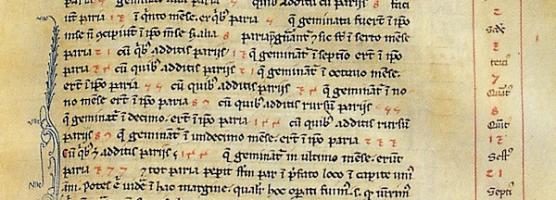
While exploring the questions about climbing stairs you might have come across the sequence of numbers
1, 2, 3, 5, 8, 13, ....
It's defined by the fact that each number is the sum of the two preceding numbers (apart from 1 and 2, which start the sequence off).
This string of numbers is called the Fibonacci sequence, after a mathematician who lived over 800 years ago. The sequence has become quite famous because it appears in a variety of contexts. But we have to thank Fibonacci for much more than just a string of numbers: he also brought to Western Europe the number system we use today: the decimal number system made up of the symbols 0 through to 9 and based on the number ten.
During Fibonacci's life time, Western Europeans still wrote their numbers using Roman numerals. These were not easy to read or write down, and they made calculations quite complicated. Although his family came from Pisa in Italy, Fibonacci grew up in north Africa, where his father was doing business, and travelled to Egypt, Syria and Greece. It was here that he encountered the now familiar decimal number system, which was first developed in India and then adopted by the Arabs, and realised just how handy it was. When he returned to Italy he wrote a famous book called Liber Abaci, meaning "the book of calculation", and published it in 1202. In it he explained the new numerals and demonstrated their worth. (You can read more in this article.)
Interestingly, Fibonacci never called himself by that name. Instead he referred to himself as Leonardo Pisano. The name Fibonacci probably comes from a historical accident. The first line of the Liber Abaci translates as "Here begins the book of calculation composed by Leonardo, son of the Bonaccio's, Pisano in the year 1202," referring to his father Guglielmo Bonaccio’s family. When scholars later analysed hand-written copies of the Liber Abaci they seem to have shortened the Latin for this family connection, "fillius Bonacci", to Fibonacci, and taken it as his surname.
